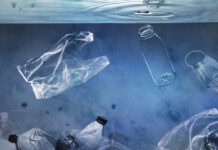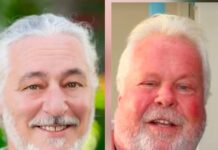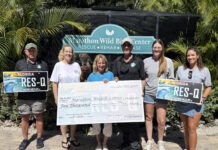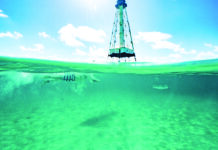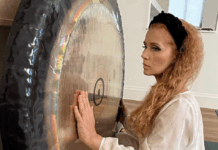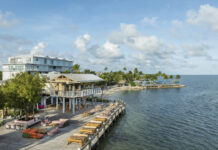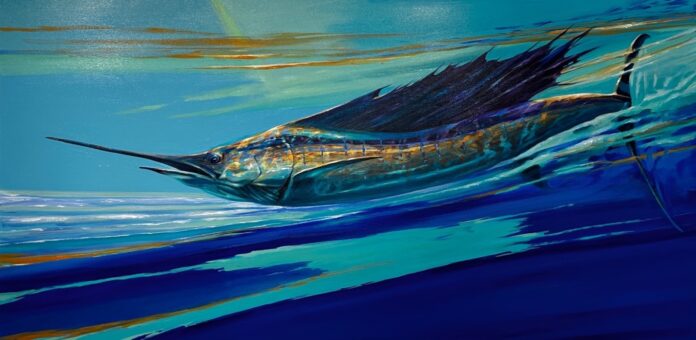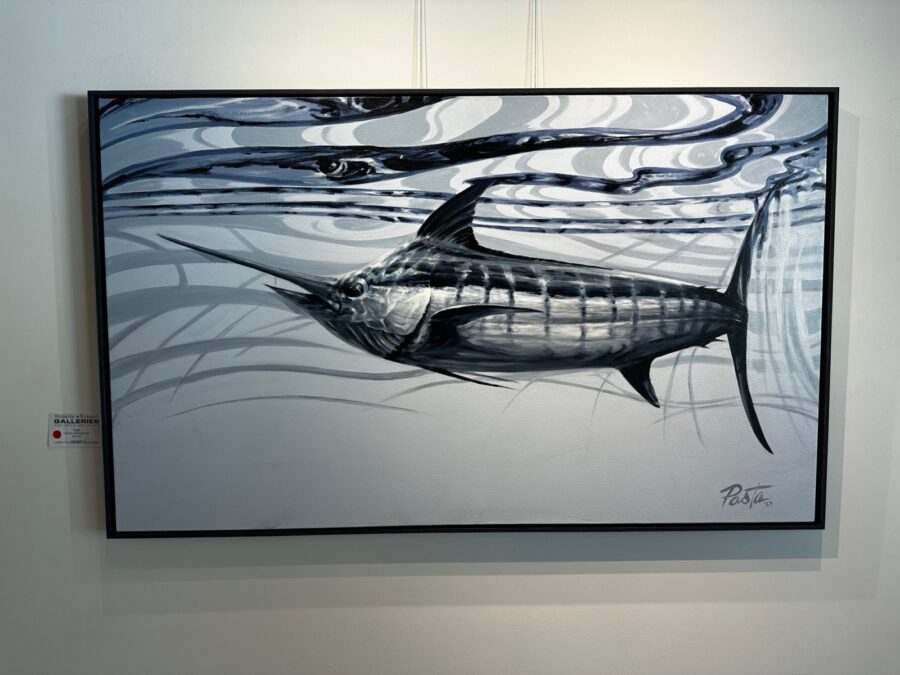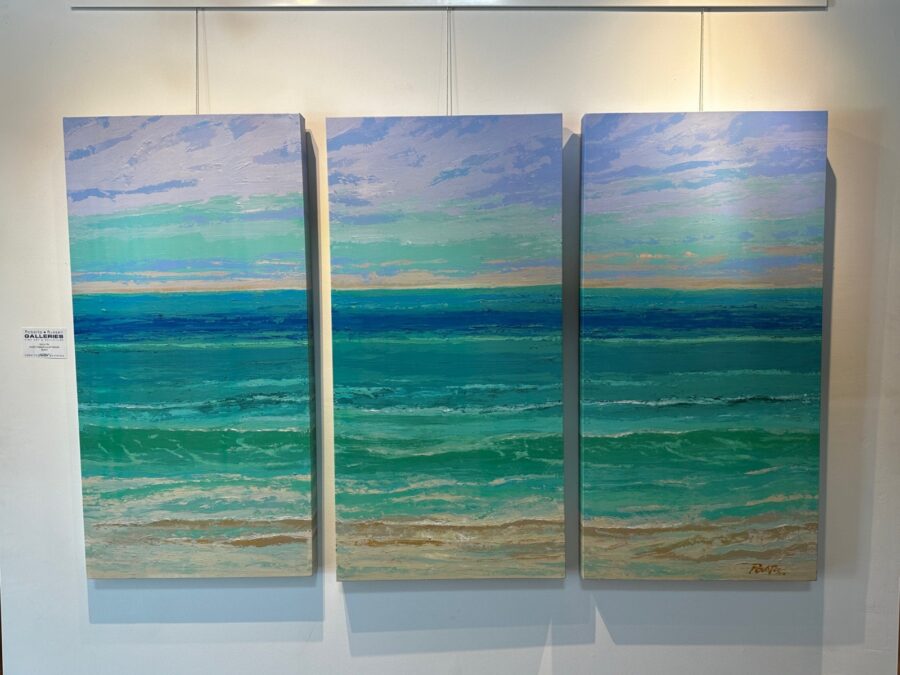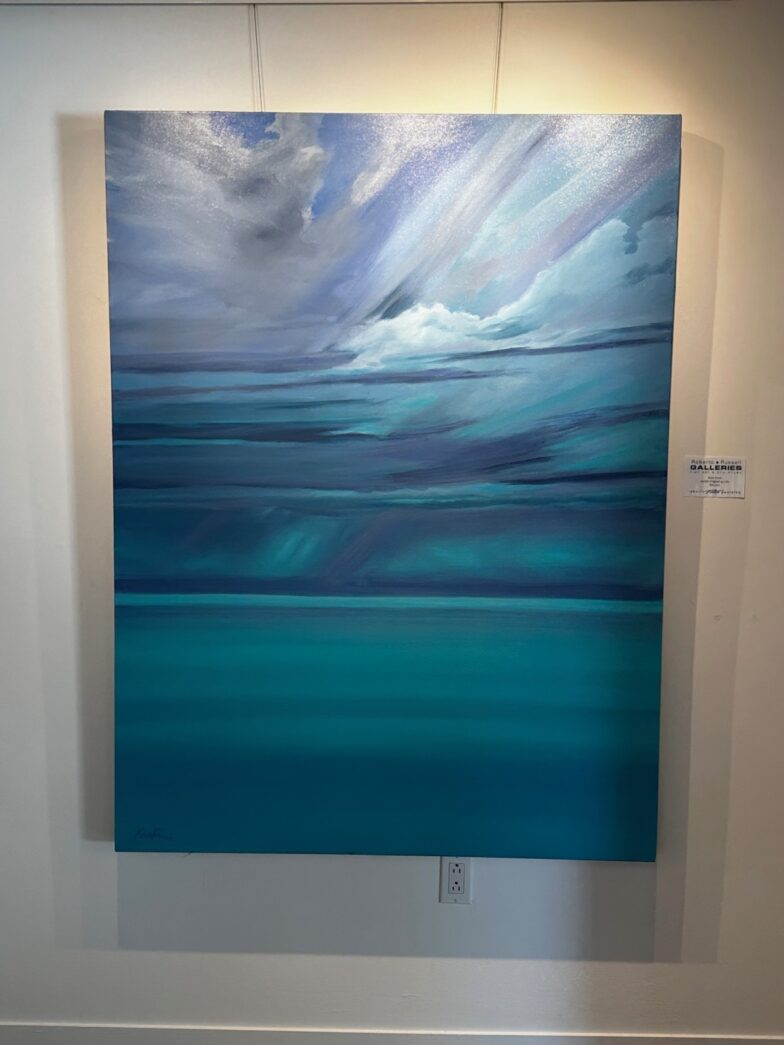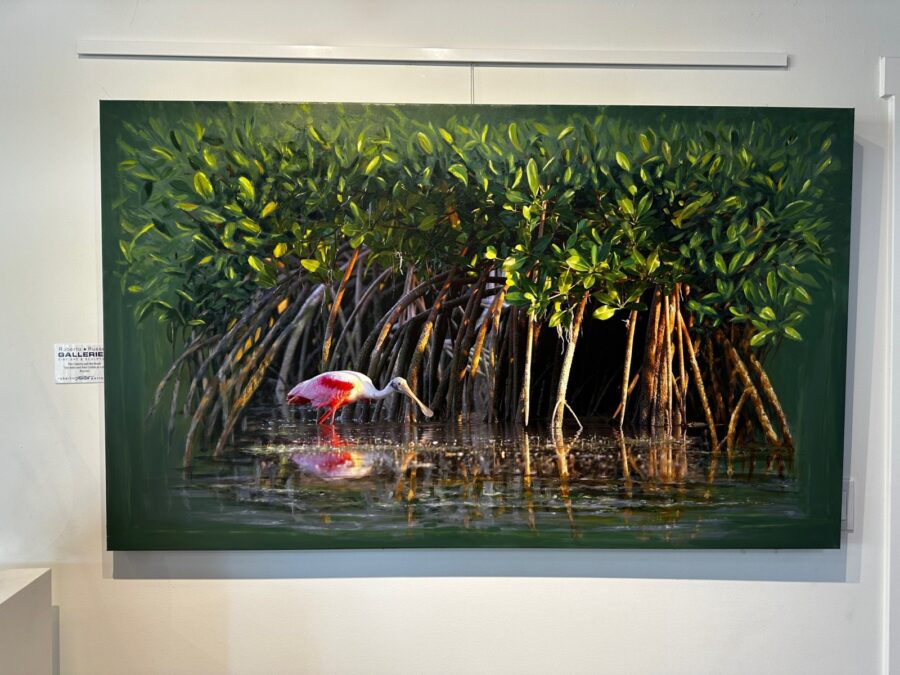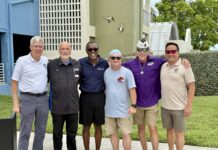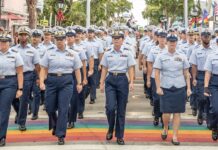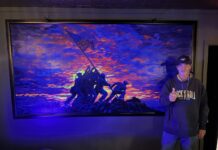An inquisitive young boy stares for hours at an aquarium. He is mesmerized by the fish, how they move, the shimmer and shine in the different light. The shadows, how they are cast and what the light moving through the water does. This is what an artist does: observe.
To the rest of the world, pasta is a delicious Italian treat. In Islamorada, if you mention Pasta, you would be referred to the local artist, Roberto “Pasta” Pantaleo. Originally from Brooklyn, New York, he got his nickname due to his heavy Italian accent and trouble pronouncing his last name, Pantaleo.
In the urban jungle, Pasta dreamed of a better life and one that entailed painting sportfish and tropical waters.
Pasta has become a staple in Islamorada for over 20 years; his gallery is located near the entrance of Morada Way Arts & Cultural District. Pasta – with his boisterous personality, black rimmed glasses, long hair and freshly trimmed goatee – feels like an artistic sage. He recently unveiled his new art in grand fashion at the Russell Gallery at Ocean Sotheby’s International Realty. It was here that I met up with Pantaleo to view his newest works.
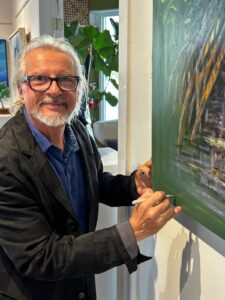
When an artist has been around that long, they strive to work on their legacy. Pasta’s new collection carefully showcases his ability and gives us a glimpse of where he wants to take the art next.
Pasta’s art is mostly focused on sportfishing. His paintings of sailfish, marlin and tarpon dazzle in his usual way, the fish have electrifying movement. One of the best ways to describe it is that you really understand how the fish moves and its personality when you see his art.
Pasta likes to experiment; a few years ago, he made fish with brighter than normal colors and unusual color combinations. With this exhibition, the paintings have matched the dramatic movement with a creative sense of color. “Sunrise Rooster,” a painting of a sailfish, feels like old dramatic Pasta, but with bold and exciting colors.
He continues his play with colors in “Tarpon Squared,” in which he takes a traditional tarpon jumping out of the water and changes the painting by giving it eight different colored quadrants. Pasta also plays with color by taking it away and focusing on single colors and giving us an overall mood.
He teases us with a painting of a sailfish called “Azul,” the Spanish word for blue, and the painting is done in different shades of blue. Then you have “Biggie,” a large blue marlin piece done almost entirely in grayscale. The piece works in interesting ways, the lack of color adds wisdom and drama to the fish. If you look at the background, you notice the water is done in a way that looks almost tribal.
“It is about the purity of things. It is something that is essential with what I do. If I’m playing music or riding around on my motorcycle, it is about the purity of the art and the purity of sportfishing,” Pasta said.
“Fly Zone” features two tarpon that feel like you can swim right up to them. This wasn’t just about the fish. Pasta creates almost dream-like seascapes when featuring the waters off Islamorada with his triptych “Sea La Vie” and large format “Rum Front.” The surprise of the show is a collaboration between Pasta and local photographer Tim Rahn, “The Camera and the Brush.” The work features a photograph of a roseate spoonbill wading in the water surrounded by a large gathering of mangroves. The mangroves transform from photo into painting, creating a window of a painted and photographed reality.
Pasta has come a long way from studying the light and shadows of fish in the aquarium. The young boy from Brooklyn is living his dreams, being able to paint his fish in paradise. I asked Pasta what the future holds for him. He glanced over at me, knowing the answer, but not willing to let us know yet.
“It is going to be great, I’m focusing on here, Islamorada. It will be going back to basics, to the roots, but better,” he said.
Pasta’s work can be found at his signature gallery at 81599 Old Highway, Islamorada or online at artbypasta.com.
